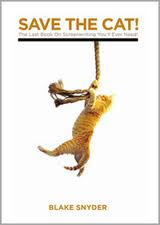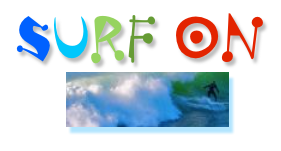
This blog posts on Mondays. Second Mondays of the month I devote to my writing workshop students and anyone else interested in creative writing. Welcome!
> For the archive of workshop posts click here.
This finds me away from the blog this week. Herewith a post from the archives:
Writing Loglines and the Concept of “the Eyespan“
Originally posted on Madam Mayo blog February 22, 2012
I resisted writing loglines for a long time, for I was of the school of Flannery O’Connor’s famous saying (as I recall it), “if you want to know what the story is about, read the story.” In other words, I believed in the mysterious resonance of literary profundity– and, oh yeah, I still do– but I have come to appreciate the focusing power, both for the writer herself and for her sales team (agent, editor, marketing staff, booksellers, et al) of packing the whole enchilada into one super-yummy bite– because, otherwise, you and your readers will be left vaguely wondering, um, what might it be? “A good meal?” Err, that could anything from a chunk of cheese to a 5 star foie gras extravanganza.
Specificity entices.
It also repels. Dear writerly reader, as you know, there are readers you don’t want your book to attract. I don’t mean that in a necessarily snobby way. After all, someone who’s looking for a guidebook wouldn’t want to be served up a lyrical literary experiment in travel memoir– and vice versa.

I just wrapped up a few days of giving writing workshops in San Miguel de Allende, and on the last day, I evangelized about loglines which I would have done anyway but it so happened that I had just, the night before, finished reading Blake Snyder’s Save the Cat! a both amusing and practical guide to writing screenplays which, by the way, offers a slew of examples of great loglines. I don’t write screenplays (yet) but the basic principles of storytelling are the same, whether for the screen or the stage, the page, or lo! ye olde campfire. Seriously, if you’re writing any kind of story, read Save the Cat!, have a chuckle or nine, and save yourself a heap of headaches.
Snyder writes, “If you can’t tell me about it in one quick line, well, buddy, I’m on to something else.”
(Does this guy snazz around Malibu in a little red convertible, or what?)
Yours Truly defines the so-called logline as a one to two sentence description of the book that (a) tells the reader what to expect and (b) entices.
Here are some examples from various books that work for me– not all official, by the way, but plucked from longer descriptions on the book’s jacket; others are simply subtitles; others were cooked up not by the author but by the editor and/or marketing staff:
This ultimate insider’s guide reveals the secrets that none dare admit, told by a show biz veteran who’s proven that you can sell your script if you can save the cat.
Save the Cat! by Blake Snyder
From literary journalist Sara Mansfield Taber comes a deep and wondrous memoir of her exotic childhood as the daughter of a covert CIA operative.
Born Under an Assumed Name by Sara Mansfield Taber
How what we hear transforms our brains and our lives, from music to silence and everything in between
Healing at the Speed of Sound by Don Campbell and Alex Doman
An epic novel about a family torn apart in the struggle-to-the-death over the destiny of Mexico
The Last Prince of the Mexican Empire by Yours Truly
Alexander von Humboldt and the Latin American journey that changed the way we see the world
Humboldt’s Cosmos by Gerard Helferich
Not long ago the Big Thicket of East Texas was still one of those places singular in its southernness, like the Mississippi Delta or the Carolina Low Country; now its old-timers and their ways are nearly gone. They will not be forgotten, though, for in My Grandfather’s Finger, Edward Swift recalls a Big Thicket populated by family and friends as gloriously vibrant and enigmatic as the land itself.
My Grandfather’s Finger by Edward Swift
War and Peace broadly focuses on Napoleon’s invasion of Russia in 1812 and follows three of the most well-known characters in literature: Pierre Bezukhov, the illegitimate son of a count who is fighting for his inheritance and yearning for spiritual fulfillment; Prince Andrei Bolkonsky, who leaves his family behind to fight in the war against Napoleon; and Natasha Rostov, the beautiful young daughter of a nobleman who intrigues both men.
War and Peace by Leo Tolstoy
All of these fall into what I think of an an “eyespan”– an amount of text the reader’s eye can take in in a “gulp.” (I admit, the last example is long– but it is one sentence.)
If you google around, you will find a multitude of webpages with advice, and schoolmarmy formulas, for writing log lines. Such rigidity might be apt for certain industries (TV pilots?) but for books, we have a scootch more wiggle room. But not past the eyespan.
What you might also notice is that in these examples– just pulled from the books I happened to have at hand– the (very few) adjectives and verbs have verve:
ADJECTIVES
ultimate
singular
gloriously
vibrant
enigmatic
deep
wondrous
exotic
covert
illegitimate
beautiful
VERBS
reveals
dare
admit
prove
sell
save
hear
transform
to be (forgotten)
follows
fighting
yearning
leaves
fights (again!)
intrigues
So…. if you’re working on a log line, why not make a list of vervy verbs and such from the books you have at hand? Recycling a few of them (covertly fighting! deeply yearning! wondrously transforming!) can be a felicitous endeavor…
P.S. I offer several detailed reading lists for writers here.
For updates on upcoming workshops I invite you to sign up for my newsletter here.

On Seeing as an Artist or, Five Techniques for a Journey to Einfühlung
Q & A: Amy Hale Auker, On Ordinary Skin: Essays from Willow Springs
Find out more about
C.M. Mayo’s books, articles, podcasts, and more.


